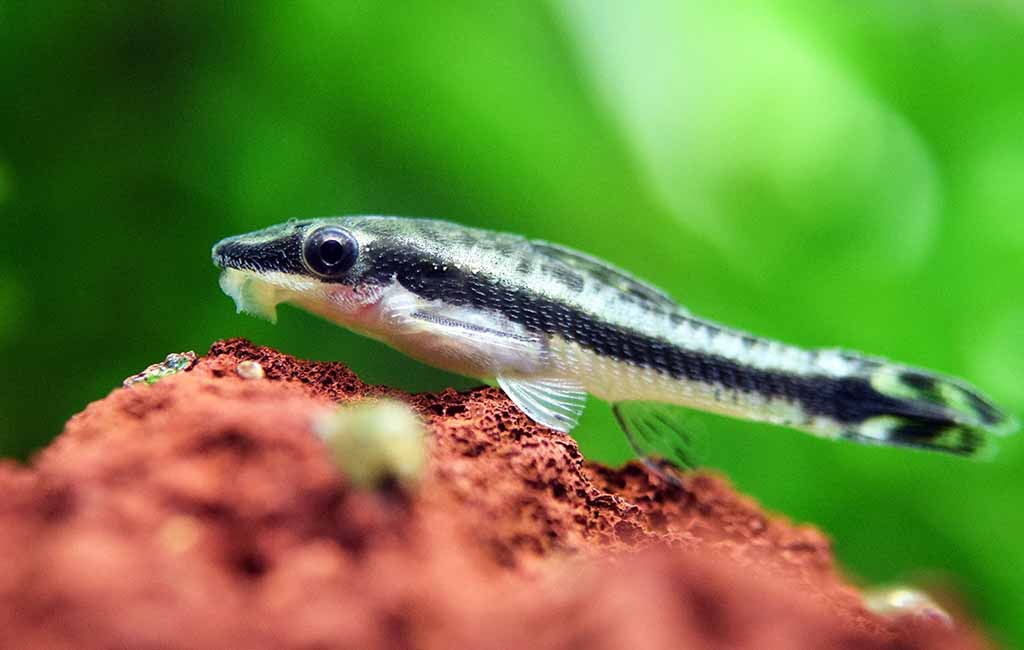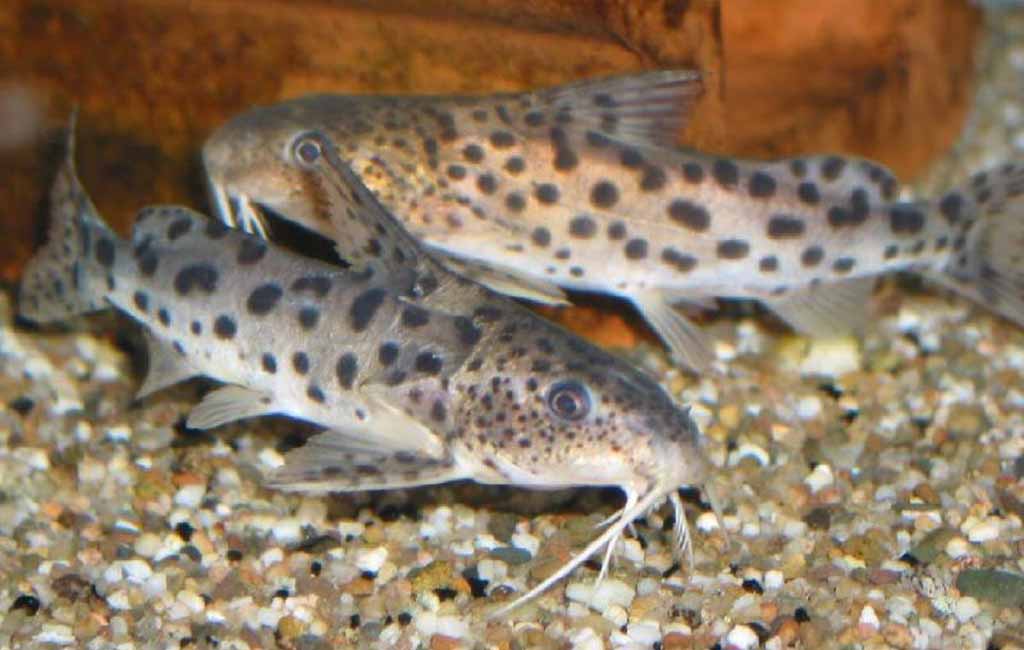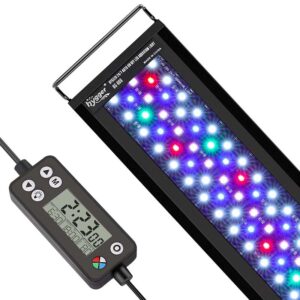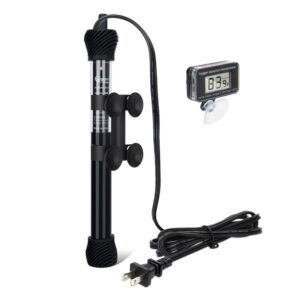Have you ever looked into your aquarium and wondered what hides in the darkness of the bottom? While they are interesting inhabitants of the seabed, they add quirk to your underwater aeronautics. However, the selection of appropriate bottom-dwelling fish species and the creation of the best conditions for them remains a challenge.
Content Table
In this article, you are going to learn about bottom dwellers, including their behaviors, where they thrive, whether they require lighting, lists of the best 10 bottom dwellers, and how to feed them.
What Is Bottom Dwelling Fish
Benthic fish, also referred to as bottom fish, is a rather large category of fish that level themselves at the sea bottom for most of the time. They have come with specific characteristic features that align them to specific settings as pointed out by.
- Flattened bodies: These aid in ensuring that they are close to the substrate all the time.
- Mouths positioned on their underside: Perfect for ground feeding.
- Strong pectoral fins: For use in moving around at the shallow end of the pond.
Habitat
Bottom-dwelling fish can be found in a variety of aquatic environments, including:
| Freshwater: Lakes, rivers, and ponds | Saltwater: Oceans and seas |
They inhabit different depths, from shallow coastal waters to the deep sea.
Types
In the category of bottom-dwelling fish, there are quite many types. Here are a few examples.
- Flatfish: Flounders, halibut, and sole are flatfish with the ability to lie flat on the sea bed to conceal themselves.
- Catfish: Most catfish are benthic, meaning they lie at the bottom of the water body and have barbells which are like whiskers used to forage for food on the bottom.
- Rays: Stingrays and skates are fish that live on the sea floor and have broad and flat bodies with fins like wings.
- Cod: Grounst fishes such as cods, haddock, and others are commercial fishes that feed on the bottom of the sea.
- Eels: The majority of the eel species will be found dwelling in the bottom of the water body, either boring themselves into the ground or concealing themselves under stones.
Peculiarities
- Feeding Habits: Dwellers feed on worms, crustaceans, mollusks, and other fishes and so are referred to as bottom-dwellers. Some are filter feeders, others are scavengers.
- Reproduction: Most demersal fishes therefore possess a peculiar method of reproduction, where they lay their eggs on the sea floor or give birth to live young ones.

Bottom dwelling fish Otocinclus
Lighting for Bottom Dwellers
Understanding the Basics of Aquarium Lighting
- Light Penetration: Bottom-dwelling fish often reside in dimly lit or even dark environments. Excessive, direct lighting can stress them and disrupt their natural behaviors.
- Color Enhancement: While not as crucial as for top-dwelling fish, proper lighting can still enhance the colors of bottom-dwellers.
Ideal Lighting Setup
Low-wattage LED Lights
Low-wattage LED lights or fluorescent tubes should be used to afford uniform, soft, and natural lighting. It is important not to use a strong spotlight as it causes strained shadowing of the fish and excessive stress of the bottom dwelling.
Targeted Lighting
This is good to use spot or moonlights to brighten up certain parts of the tank, such as caves or plants part. It is possible to recreate an actual light environment and add to that the natural color of the fish.
Day/Night Cycle
Use a timer on the lighting to create a normal, natural day and night level. This goes a long way in controlling the behaviors and the metabolic rate of the fish, thus achieving the best of health.
Color Enhancement Tips
- Water Quality: For the best color contrast, it is important to maintain the best water quality possible. Water changes should be frequent and the right type of filtration should also be used.
- Nutrition: Increase feeding on the vitamins and snacks to be able to bring out the natural color of the fish.
- Stress Reduction: Reduce as many stressors as possible, which include overcrowding, water pollution, and ever-flowing changes in the environment.
- Species-Specific Lighting: Some fish species that dwell at the bottom of the tank may maybe have special lighting needs. The general care knowledge for any fish species may not be enough to get your fish as colorful as possible, so take the time to look for certain requirements for your fish’s species.

Bottom dwelling catfish
Additional Considerations
- Substrate: A dark, sandy substrate can help to create a more natural environment for bottom-dwellers.
- Plant Life: Consider adding plants to the tank, especially those that thrive in low-light conditions. These can provide additional cover and enhance the overall aesthetic appeal.
Top 10 Bottom Dwelling Fish for Aquarium Tank
- Corydoras Catfish: These calm fish are very good algae eaters and are available in small, medium, and large types and different colors
- Plecostomus (Pleco): Even though some species of the plecos are rather large, the common bristle nose pleco is perfect for home aquariums. They are active algae eaters, making them good to have around since they’ll keep your tank clean
- Loaches: They are live-bearing fish with relatively large and colorful fish best known for being active, and they include clown loach and the kuhli loach. It refers to animals that are known to have different characters and like to play.
- Otocinclus: These are small types of catfish that have very efficient algae eaters and are good for your built aquarium. It is calm, and these animals can be housed in a group.
- Bristlenose Pleco: These small plecos are algae eaters, docile, and well-suited to their responsibilities. They’re ideal if you have a small tank and will help you maintain your aquarium with ease.
- Kuhli Loach: These small, elongated fish are vigorously swimming and are rather entertaining to observe. They are well-suited for community tanks and are very good at keeping your substrate in perfect shape.
- Yoyo Loach: These fish are characterized by a special way of swimming: in the yoyo manner. They are calm species and can share their tank with other such fishes.
- Zebra Loach: These colorful fish are active and playful. They are perfect for community tanks and help to maintain the cleanness of the substrate.
- Bumblebee Goby: Despite growing to an adult size of about 5, these Goby fish are small, brightly colored, and are best kept in numbers. They are perfect for nano tanks and can be used also to maintain the cleanliness of the substrate.
- Synodontis Catfish: These catfishes are active at night; they have a different form and structure from that of other African fishes. They are docile and may be kept in one large common tank.
The Best Food for Bottom Dwelling Fish
The diet of bottom feeders is going to vary depending on the type of bottom-dwelling fish, but here are some ground rules for feeding these fish.
Sinking Foods
- Sinking pellets or wafers: These are purposely developed to settle at the bases of the tank so that bottom feeders have easy access to them. Choose items that have good protein quality, vitamin, and mineral content.
- Sinking flakes: Although always preferred to sink pellets or wafers, sinking flakes can be very handy when in a hurry. But they may not sink as quickly, so it’s advisable to pick a good brand that comes with flakes that sink very fast.
Live and Frozen Foods
- Bloodworms: It is recommendable for its high protein content and may be offered fresh, and frozen.
- Brine shrimp: Another good source of protein is brine shrimp, which can be live or frozen in the culture container.
- Daphnia: These small crustaceans are good sources of fiber, they can be fed live or frozen.
Vegetable Matter
- Algae wafers: These are relatively high in fiber, and thus passing them will not add to the formation of scum in the tank.
- Blanched vegetables: You can chop some vegetables like zucchini, spinach, and cucumber to blanch to feed your bottom-dwellers.
Additional Tips
- Variety is key: Feed the fish in diversity to make sure that you have catered for all the nutrient needs of your fish.
- Feed small amounts: Exploitation may also cause a typical deterioration in water quality, and overfeeding. Stuff the fish in small portions with food at intervals of 2–3 times per day.
- Observe your fish: Observe the behavior of the fish and feed them the best way that you should.
- Consider your fish’s specific needs: Some tank inhabitants like the plecos would need some wood or algae fed to them in addition to the ready fish food.
The Last Word
Often it is very interesting to add bottom-dwelling fish to your aquarium. Only if you know their needs, you can shape a successful underwater environment. Select bottom-dwelling fish based on the tank size, appropriate lighting, and water requirements, and ensure you feed the species nutritionally and varied. If properly taken care of, these unusual and beautiful fish will be a lovely addition to your home aquarium.


Leave a comment